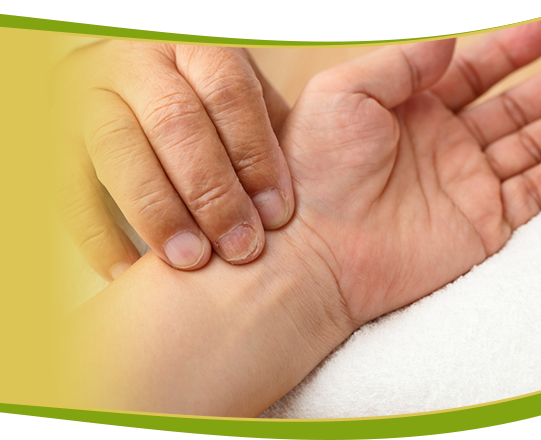June 9, 2016
Methods of Diagnosis in Ayurveda
Abstract
Ayurveda is science of life which is composed of two sanskrit words (“ayur = life and “veda” = knowledge or science). It is a natural healing system which has been originated around 5000 years ago in the Vedic culture of India.
In Ayurveda it is believed that good health depends on an appropriate balance between body, mind and spirit. Ayurveda works on this concept that use of herbs, a balanced diet and a good life style can cure ailments.
Concept of Ayurveda
According to Ayurveda, everything in the universe either it is living or non living is connected with each other. Good health can be achieved when body, mind and spirit are in equilibrium with universe. Disruption of this equilibrium leads to poor health.
Every individual is having five basic elements as in the universe
- Space
- Air
- Fire
- Water
- Earth
These elements combine in the body and form the three energies called as doshas. These three energies are responsible to maintain the physical and mental health. Three energies are vata (wind), pitta (fire) and kapha (earth+ water). These energies are important to maintain the good health. Imbalance of any of three energies results in the health complications.
“वायु: पित्तं कफश्चेति त्रयो दोषा: समासत: ॥ विकृताऽविकृता देहं घ्नन्ति ते वर्त्तयन्ति च “
The above vedic text explains that vata (vayu), pitta (fire) and kapha (earth) are the three doshas in the body. Appropriate balance of three doshas leads to the health whereas imbalance in tridoshas is responsible for diseases.
Methods of diagnosis in Ayurveda

Diagnosis is very important aspect of Ayurvedic treatment. Diagnosis means to find out the basic cause of a disease (Nidan). Without the proper diagnosis it is difficult to suggest medicine and cure the diseases.
Causative factors of diseases may be improper eating habits, life style and various other activities. In Ayurveda, treatment is done according to constitution of an individual.
Two Main methods of Diagnosis in Ayurveda
- Rog Pariksha (Diagnosis of a disease)
- Rogi Pariksha (Examination of a patient)
Rog Pariksha (Diagnosis of a disease)
It has been mentioned in Charak Samhita vimaan sthan chapter 4.
Three ayurvedic diagnostic methods are applied for diagnosis of disease
- Aaptoupdesh (As is advised by ancient sages)
- Pratyaksh (Direct observation)
- Anumaan (Guess work e.g- to know digestive power of patient)
Rogi Pariksha (Examination of a patient)
It is done by three methods of diagnosis in Ayurveda.
1. Tri-fold examination of a patient
Tri-fold examination of a patient was given by Maharshi Vagbhata (the author of text book of Ashtanghridayam).
- Observation (Darshan)
- Touch, palpation and percussion(Sparshan)
- Questioning (Prashan)
2. TENFOLD EXAMINATION (DASHVIDHA PAREKSHA)
Tenfold examination was given by Acharya Charaka in Charak Samhita vimaan sthan chapter 8.
Ten-fold examination of a patient has following 10 methods
- Prakriti (Body type/ Body constitution)
- Vikriti (illness)
- Sara(Outlook of patient)
- Samhanan, (Type of food consumption like vegetarian and non –vegetarian)
- Satva (Mental strength of patient)
- Satmya (What suits to patient)
- Aaharshakti (Food intake)
- Vyayam-shakti (Physical fitness)
- Vaya (Age)
Pramana (The quantitative measures) for examining a patient. Abnormalities related to the Structure and functions of body are observed.
3. EIGHTFOLD EXAMINATION (ASTHAVIDHA)
Eightfold examination as the name suggests that there are eight methods for the diagnosis. These types are more practical and useful. It helps to get on quick diagnosis of an OPD patient. The Eight-fold examination of a patient has given by Yogratnakara.

In above Ayurvedic text it is explained that there are eight things (nadi -pulse, mala- feces, mutra- urine, jihva – tongue, shabda – hoarseness of voice, sparsha – touch, drik – examination of eyes, akruti – shape of body) which are to be examined by ayurvedic physician for making proper diagnosis of a disease.

- Pulse examination (Nadi preekshan) – In this examination strength, rhythm and speed of pulse are observed to make a diagnosis.
- If pulse is felt irregular (missing at intervals) or moving fast it can be compared to moving like a snake (sarpavat) that means vata is dominant in that pulse.
- If pulse is having good volume with a throb and it can be compared to jumping frog (mandookvat) then pitta is dominant in that pulse.
- If pulse is heavy or slow and its movement is like moving swan (hansvat) then kapha is dominant in that pulse.
- Urine examination (Mootra preeksha) – Color and turbidity of urine is observed by naked eyes.
- Fecal examination (Mala preeksha) – Examination of fecal matter is also done by naked eyes in order to see blood in stool and its floating nature (jalnimajan preeksha).
- Tongue observation (Jivha preekshan) – Tongue of patient is examined for any discoloration, ulcers and white coating.
- Examination of the voice and speech of pateint (Swar preekshan) – Hoarseness of voice is observed.
- Skin and touch examination (Sparash preekshan) – Temperature of body, color and texture of skin is observed by Sparash preeksha.
- Observation of eyes (Netra preekshan) – Color of iris, sclera and conjunctiva is observed.
Contact Planet Ayurveda Support Team to provide you the costing/ordering and delivery information at costing.planetayurveda@gmail.com or Call at 0172-521-4040 (India), +91-172-521-4040 (Outside India) or Whatsapp at (+91) 842-749-4030.



